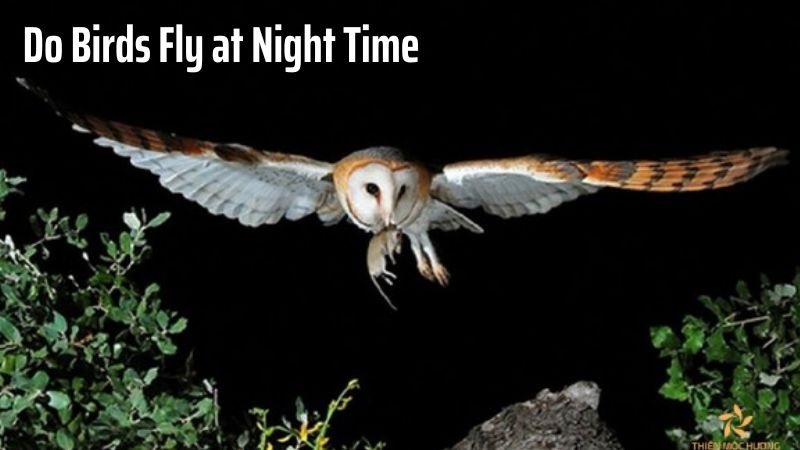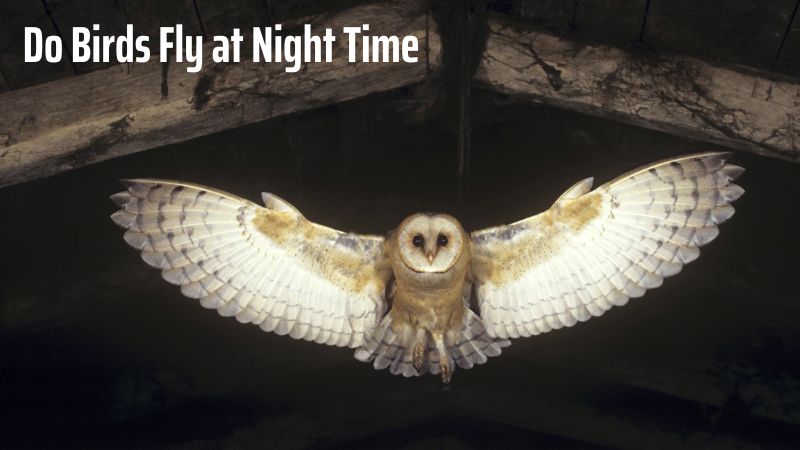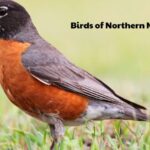Bird Care
Why Do Birds Fly at Night Time? An Exploration of Nocturnal Bird Behavior
Birds are generally known for their daytime activities, but a fascinating group of species has adapted to thrive in the night. Understanding why do birds fly at night time reveals intricate adaptations that enable them to navigate and hunt in darkness.
This nocturnal behavior not only highlights their remarkable sensory abilities but also their strategic advantages in a world where nightfall offers unique opportunities and challenges. Let’s explore more details with Bird 04!
Reasons Why Birds Are Active During the Day
- Light: Sunlight provides birds with the ability to navigate and locate food more efficiently. The enhanced visibility during the day helps them find prey or forage for seeds, insects, and other food sources.
- Temperature: Daytime temperatures are generally warmer, creating more favorable conditions for birds to be active. This warmth helps maintain their body temperature and boosts their energy for foraging and other activities.
- Predators: Birds can detect predators more easily during the day due to better visibility. This allows them to stay alert and avoid potential threats more effectively.
Do Birds Fly at Night Time?
Common Characteristics of Nocturnal Birds
Nocturnal birds share several specialized traits that enable them to thrive in darkness, making the night their prime time for activity.
- Keen Night Vision: One of the most defining features of nocturnal birds is their exceptional vision in low-light conditions. Their eyes are typically larger in proportion to their skulls, allowing them to gather as much light as possible during the night. This enhanced vision helps them detect even the slightest movement of potential prey or threats in the darkness.
- Sound-Based Navigation: In addition to their sharp eyesight, many nocturnal birds rely on sound for navigation and hunting. They possess highly developed hearing, allowing them to detect the faintest rustling of a small rodent or insect. For example, owls have asymmetrically placed ears, which helps them pinpoint sounds with extreme accuracy, even in complete darkness.
- Dark Feathers for Camouflage: Many nocturnal birds have darker plumage, which serves a crucial role in blending into their nighttime surroundings. This camouflage helps them remain hidden from both predators and prey. The muted tones of browns, blacks, and grays allow them to move stealthily and hunt undetected.
Examples of Nocturnal Birds
- Owls: Perhaps the most famous nocturnal bird, owls are masters of the night. Their large eyes are capable of excellent night vision, while their highly sensitive hearing allows them to detect the slightest movement of their prey. Owls also fly almost silently, thanks to the special serrations on the leading edges of their wing feathers, which minimize sound.
- Barn Owls: Known for their pale faces and heart-shaped facial discs, barn owls are perfectly adapted for silent hunting in the dark. They often hunt in complete silence, relying on their exceptional hearing to locate prey like small mammals. Their facial structure directs sound waves toward their ears, further enhancing their ability to detect movement in the dark.
- Night Hawks, Nightjars, and Seabirds (Petrels): Other examples of nocturnal birds include night hawks and nightjars, which feed on insects during their nighttime flights. Petrels, a species of seabird, are also known for their nocturnal activities, using the night as a time to hunt fish or squid while avoiding many daytime predators.

Reasons for Nighttime Activity
- Avoiding Competition: Being active during the night provides nocturnal birds a significant advantage, as they can avoid competing with diurnal (day-active) birds for food. This separation of activity periods allows them to access food sources such as insects, small mammals, and other prey without the pressure of competing species.
- Hunting Nocturnal Prey: Many of the prey species that nocturnal birds target are also active during the night. Small mammals like rodents, as well as night-flying insects, are easier to catch after dark. The birds’ keen senses of sight and hearing allow them to efficiently track and hunt these prey species, which might be more vulnerable at night.
- Avoiding Predators: Operating under the cover of darkness helps nocturnal birds evade their own predators, which are often more active during the day. Their natural camouflage and ability to fly silently further enhance their chances of staying hidden from threats while they go about their nightly activities.
Nocturnal birds have adapted in remarkable ways to make the night their domain, using their unique characteristics to navigate the challenges and opportunities of the dark hours.
Adaptations of Birds for Nocturnal Flight
Sensory Organs
- Eyes: Nocturnal birds have specially adapted eyes that enable them to see clearly in low-light conditions. Their eyes often have a high proportion of rod cells, which are sensitive to dim light, allowing them to detect movement and navigate in darkness. The size and structure of their eyes are optimized to maximize light absorption and enhance night vision.
- Ears: Many nocturnal birds possess highly sensitive hearing that is crucial for locating prey in the dark. For instance, owls have asymmetrical ear placements that allow them to pinpoint sounds with exceptional accuracy. Their auditory systems are finely tuned to detect even the faintest sounds, helping them detect and hunt prey that is active during the night.
Respiratory System
Nocturnal birds have evolved respiratory systems that support their high metabolic needs during flight. Their lungs are highly efficient at extracting oxygen from the air, which is essential for maintaining energy levels during prolonged periods of activity. This adaptation allows them to sustain the physical demands of nocturnal hunting and navigation.
Feathers
- Camouflage: The plumage of nocturnal birds often features colors and patterns that provide camouflage against the night sky or their natural surroundings. This helps them blend in and avoid detection by predators or prey. The dark or mottled coloration of their feathers allows them to remain concealed while they fly or perch in the dark.
- Silent Flight: The structure of their feathers is adapted to reduce noise during flight. For example, the leading edges of owl feathers are serrated, which breaks up air turbulence and minimizes sound. This silent flight capability is crucial for sneaking up on prey without alerting it to their presence. The specialized feather structure ensures that they can move stealthily through the night.
Conclusion
In conclusion, the reasons do birds fly at night time are deeply rooted in their evolutionary adaptations and survival strategies.
From enhanced night vision and acute hearing to specialized feathers for silent flight, these nocturnal birds demonstrate a fascinating interplay between their biology and behavior. Understanding these adaptations enriches our appreciation of avian diversity and the complex dynamics of their nighttime ecosystems.





